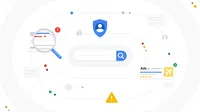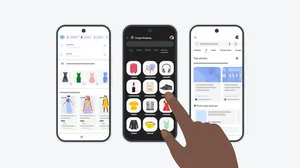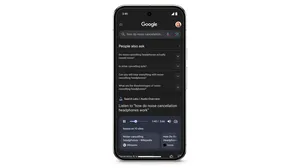Five ways we’re making Google the safer way to search

The web is home to a lot of great things. But it is also a place where bad actors can try to take advantage of you or access your personal information. That's why we're always working to keep you safe while you search, and also to give you the tools to take control of your Search experience.
Here are five ways we're making Google the safer way to search:
1. Fighting spam
The last thing you want to worry about when you’re looking for cake recipes or researching a work project is landing on a malicious website where your identity might get stolen. It’s our job to help protect you from that, and it’s one we take very seriously.
In 2020, we detected 40 billion pages of spam every day — including sites that have been hacked or deceptively created to steal your personal information — and blocked them from appearing in your results. Beyond traditional webspam, we’ve expanded our effort to protect you against other types of abuse like scams and fraud. Since 2018, we’ve been able to protect hundreds of millions of searches a year from ending up on scammy sites that try to deceive you with keyword stuffing, logos of brands they're imitating or a scam phone number they want you to call.
We’re also providing web creators with resources to understand potential website vulnerabilities and better protect their sites, as well as tools to see if their sites have been hacked. This work is helping the entire web stay safer, and making it easier for you to land on safe sites with great experiences. To learn more about our work to fight spam on Search, read our 2020 Webspam Report.
2. Encrypting searches
We also safeguard you from more than spam. We use encryption to prevent hackers and unwanted third parties from seeing what you are looking up or accessing your information. All searches made on google.com or in the Google app are protected by encrypting the connection between your device and Google, keeping your information safer.
3. Helping you learn more about your
results before you click
Another way we protect users is by giving you the tools and context to learn more about your Search results. Let’s say you’re searching for something and find a result from a source you aren’t familiar with. By clicking on the three dots next to your result, you can see website descriptions, when Google first indexed the site, and whether or not a site’s connection is secure. This added context enables you to make a more informed decision about the source before clicking the blue link.
4. Browsing safely
Sometimes in the excitement of trying to learn more about a topic, you end up clicking on a link to a dangerous site without even realizing it. But with Google Safe Browsing, we’ve got you covered. This feature currently protects over four billion devices and when enabled in Chrome, displays warning messages letting you know that the site you are trying to enter might be unsafe, protecting you and your personal information from potential malware and phishing scams.
5. Protecting you from bad ads
Providing you access to high-quality and reliable information on Search also extends to the ads you see while searching for products, services and content. To ensure those ads aren’t scams or being misused, we are constantly developing and enforcing policies that put users first. In 2020, we blocked or removed approximately 3.1 billion ads for violating our policies and restricted an additional 6.4 billion ads, across all of our platforms including Search.
All of these tools were created with you in mind, so you can click on that carrot cake recipe knowing that we are working hard to help keep you safe online.






